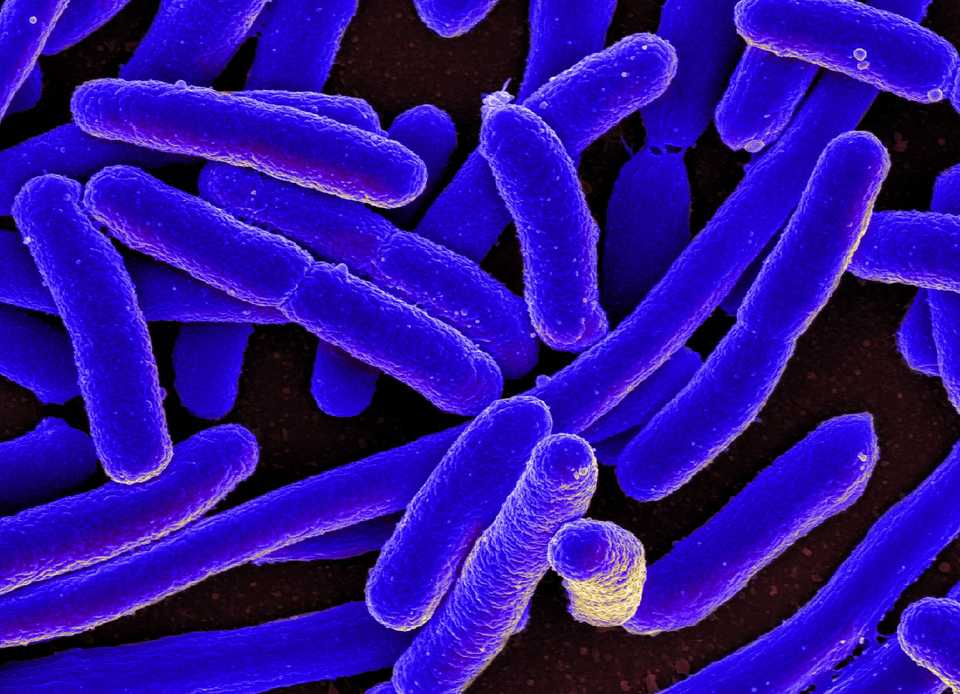I want to tell many stories about CRISPR, a technology that is at the heart of this new research, and I’ll start with the tasty stuff first.
Why we only get measles once
You and I have this amazing immunological memory. When we survive an encounter with a virus, say measles, then a representative signature of that virus is stored in our bodies so that when we encounter the pathogen again, we can produce a stronger immune response.
It’s why most of us only get measles once.
Mothers can pass on some immunity to their children via the placenta and breast milk, giving babies a temporary immunity to diseases its mother was exposed to.
Unfortunately our biological memory of these pathogens dies with us. Our children have to face the same fights that we had to, against the same diseases we did. Our victories are short lived.
However, the human species has developed an inter-generational immunological memory of sorts: vaccines. Most vaccines contain antigens — those representative signatures of viruses — allowing our natural immunity system to generate a response, and a memory, readying us for the real thing.
It turns out that some species go one step further — they modify their own genome, rewriting themselves, so that their disease-history, their scars, are carried with them, and their children.

Patterns in the genes
In the late 80’s, scientists exploring E. coli bacteria, found short, regularly spaced repeat patterns in its DNA. There was stuff between the repeat patterns, but nobody had any idea what it was all about.
Why would a bacteria have a string of repeated gene sequences, and why would the stuff between them be filled with seemingly random junk sequences?
The patterns were identified again in the early 90’s by Spanish scientist Francisco Mojica. The name given to these repeat structures in the DNA of bacteria was CRISPR.
CRISPR: Clustered regularly interspaced short palindromic repeats
It took another 10 years or so before he, and two other research groups in 2005, found out what those bits between the repeats were — they were bits of DNA from phages, viruses that attack bacteria.
So while the repeats were interesting (after all, they lead curious scientists to the structure), it turns out that the bits between the repeats, the spacers, were even more interesting.
Aside: as often happens in science, more than one group came to the same conclusion. All of this was probably aided by the increased capacity for sequencing which resulted in whole virus genome sequences being deposited in public databases.
If the spacers contained fragments of viruses, it meant that the DNA of a bacteria contains bits of the DNA of its viruses. Moreover, the bacteria aren’t actually under attack from those viruses, they aren’t suffering any bad side effects of having a bit of a virus in it.
The proposal was that perhaps the spacers played a role in immunology.
Much like how we don’t get infected by measles again as we have an antibody floating about, ready to recognize it, perhaps the same applies to bacteria: perhaps the spacers were somehow connected to an immune system of the bacteria.
Tasty yoghurt confirms it
Yoghurt is made from milk and bacteria. Many years ago, companies were trying to figure out why some yoghurt batches didn’t quite taste right. It turns out that these were the batches that were infected by phages — those viruses that attack bacteria.
Aside: I remember the awe I felt when I first heard the word “phage” in an episode of Star Trek.
Scientists at Danisco discovered that they could create stronger starter cultures for their yoghurts and cheeses by repeatedly exposing a bacteria to a library of nasty phages, each time taking the successful bacteria (the ones who live), and exposing them to the next phage in the library. Evolution in action.
They also found that this modified the CRISPR sequences, and that the spacers did indeed contain snippets of DNA from the phages that they were exposed to.
The beginning of the future
The understanding of CRISPR and what it represents to bacteria, is remarkable. Nobody had guessed that bacteria have an adaptive immune system — one in which bacteria rewrite themselves, modify their own genome, so that they contains slices of genomes from invading phages.
Unlike our immunological memory, this one is written in the very DNA of the organism, and can be passed on when a bacteria replicates.
Aside: Actually, (some) human cells also modify their genome in a process of V(D)J recombination, which is how our body is able to recognise the different signatures of so many pathogens.
How bacteria create this “most-wanted gallery”, how those bits of phage DNA end up in the bacteria’s own DNA, is where our story will go next.